Food energy
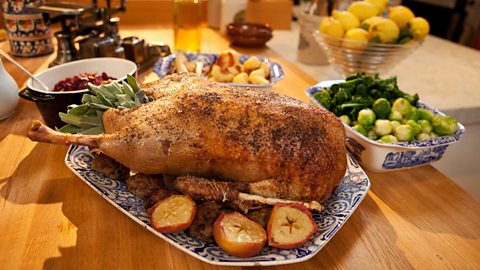
Most living things need:
- Food
- Water
- Light
- Temperatures within certain limits
- Air
Food stores chemical energy. When eaten the chemical energy is transferred and can be used immediately or stored.

What does the body need energy for?
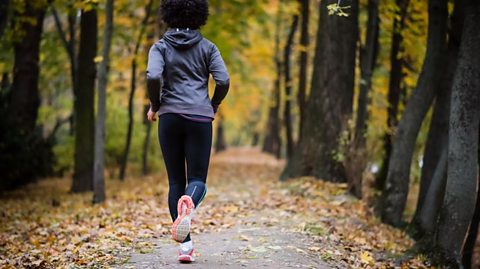
There are a number of reasons why food is essential for life. In the human body energy produced from food is essential for:
- cell growth and repair
- respiration
- blood flow
- maintaining body temperature
- movement
Energy from food keeps a plant or animal alive and allows it to carry out all its activities.
How much energy do you need?
Energy is measured in joules (J) or kilojoules (kJ).
One kilojoule is the same as 1000 joules i.e. 1 kJ = 1000 J
An older unit for measuring food energy is the kilocalorie, often just called calories.
One calorie = 4.2 J
Different animals need different amounts of energy. The amount of energy needed by a human depends on many things, including their height, age and what they are doing.
| Animal | Daily amount of energy kJ/day |
|---|---|
| Elephant | 200,000 |
| Cat | 800 |
| 13-year old girl | 9,000 |
| 13-year old boy | 10,000 |
| Average adult woman | 8,400 |
| Average adult man | 10,500 |
Nutrition labels found on packaged foods are calculated by food companies. This is for some lightly salted crackers.

This table shows the typical amount of energy available from 100g of several different foods.
| Food | Energy in kJ per 100g |
|---|---|
| Apple | 140 |
| Egg omelette | 690 |
| Bread | 1080 |
| Cheese | 1360 |
| Chocolate cake | 1920 |
| Potato crisps | 2240 |
Brisk walking typically uses 14 kJ per minute. This means that:
The energy provided by a 100 g apple is converted by a 10 minute walk (140 ûñ 14)BUTãÎThe energy provided by 100 g of crisps is only converted by walking for 160 minutes (2240 ûñ 14)!
A typical adult woman needs around 8400 kJ per day. You could get this from just 375 g of potato crisps.
Demonstrating that food releases energy
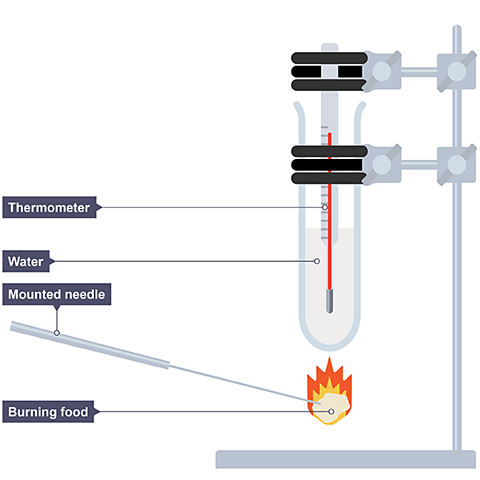
Apparatus
- Safety mat
- Bunsen burner
- Safety goggles
- Mounted needle
- Retort stand
- Boss and clamp
- Boiling tube
- 100 ml Measuring cylinder
- Thermometer
- Stirrer
- Crisps

Method
- Measure 25 cmô° of water in a measuring cylinder and pour into a boiling tube.
- Clamp the boiling tube to the retort stand.
- Measures the temperature of the water with the thermometer. Record this temperature in a suitable table.
- Fill the ignition spoon with one level scoop of biscuit.
- Use the Bunsen burner to light the biscuit in the ignition spoon and then hold the spoon 1cm underneath the boiling tube.
- Wait until the flame goes out and then stir the water gently with the stirrer. Use the thermometer to measure the final highest temperature of the water. Record this temperature in the table.
- Calculate the temperature rise and record it the table.
Conclusion
The temperature of the water rises because chemical energy stored in the biscuit (food) is converted to heat energy. This shows that food releases energy. The larger the increase in temperature the more energy within the food.
Macronutrients
In food there are three main nutrients. These are called macronutrients.
They are;
- Fat
- Carbohydrate
- Protein
If you look back to the cracker nutrition label above, 100g contains:
- 22.0 g fat
- 60.1 g carbohydrate
- 7.1 g protein
Fat, carbohydrate and protein store different amounts of energy. For example:
- 1 g of fat stores around 38 kJ
- 1 g of carbohydrate stores around 17 kJ
- 1 g of protein stores around 17 kJ
Fats are high in energy, so they should only be eaten in small amounts, however unsaturated fats from plant sources (for example, vegetable oil or olive oil) are healthier types of fat.
Scientists at food companies find out the mass of carbohydrate, protein and fat in 100 g of a food. Using the values listed above they then calculate the energy value of the food.
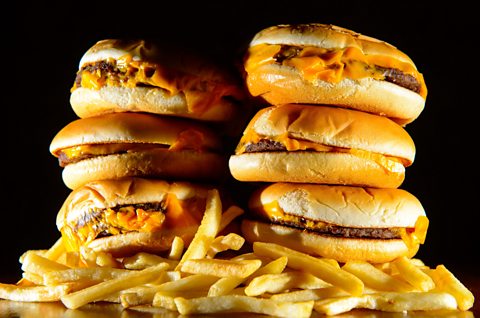
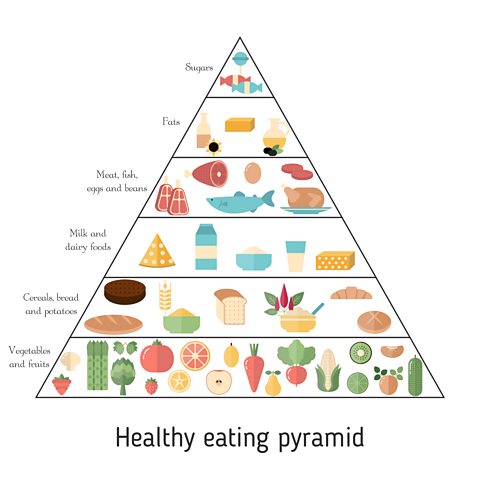
Everyone needs some knowledge of food energy, so that they can eat sensible amounts of the foods they need to stay healthy.
To maintain a healthy weight, you need to balance the amount of energy you consume through food and drink with the amount of energy you burn through physical activity.
Sports nutritionists guide athletes in deciding what to eat to perform at their best. They need a good knowledge of how much energy is stored in different foods, as well as how quickly the energy is released to the body.
Sports nutritionists advise athletes to choose foods that will help them perform at their best. Learn about food energy from a sports nutritionist
Learn about food energy from a sports nutritionist
Food energy quiz
Test your knowledge of food energy with this quick quiz.
Healthy brain
By the time you are 13 or 14 your brain has a mass of about 1.4 kg, which is the same as about one and a half litres of cola. An adult brain will not weigh much more, about 1.5 kg.
The brain is made up of:
- Water ã about 70%
- Fat ã about 20 %
- Protein ã about 8%
- Sugar ã about 1%
- Salt ã about 1%
Lobes of the brain
Each side of your brain contains a number lobes, or sections
| Name | Position in the brain | Function |
|---|---|---|
| Frontal lobe | Front and top | Thinking, problem solving making decisions, studying and planning |
| Parietal lobe | Back and top | Deals with information to do with touch, taste, size, spatial awareness and temperature |
| Occipital lobe | Back and bottom | Deals with information to do with sight and seeing |
| Temporal lobe | Bottom middle | Memory and deals with information to do with hearing, understanding language and speech, organisation |
| Cerebellum | Back near the brain stem | Balance, walking, standing, learning by trial-and-error (riding a bike, balancing on a beam, juggling), coordination, memory and learning |
| Brainstem | Base, towards the back | Controls the flow of messages between the brain and the rest of the body, and controls breathing, swallowing and heart rate, whether you are awake or sleeping |
There is no such thing as being a left-brained or right-brained person; we use all of our brain.
Good brain food and drink ã How to keep your brain healthy
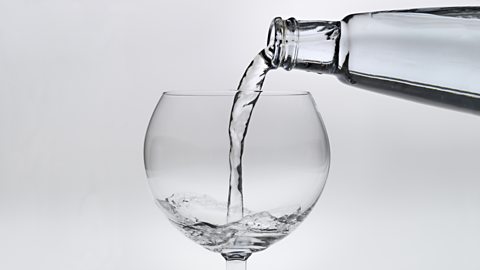
The brain uses between 20% and 25% of the energy from the food we put into our bodies, so its important to keep it fuelled. And it needs to be fuelled with good quality food and drink to keep it working at its very best. These include:
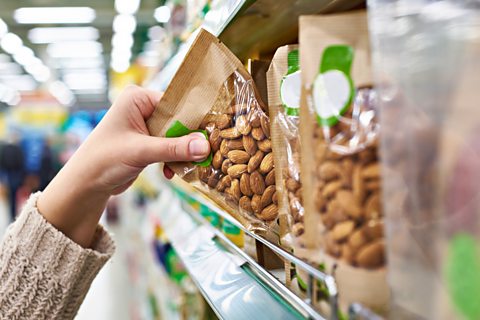 Image source, iStock
Image source, iStockWater ã remember the brain is about 70% water. It only takes 2% dehydration to affect your attention, memory thinking other brain skills.
Oily fish such as salmon, trout, mackerel
Nuts
Berries such as blueberries, blackberries, strawberries
 Image source, iStock
Image source, iStock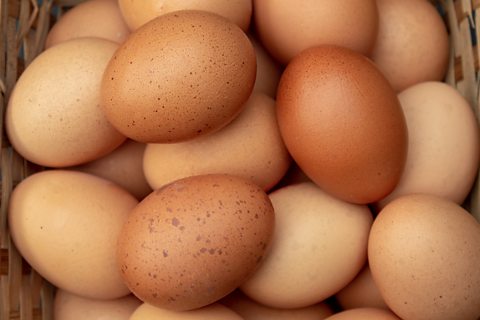 Image source, iStock
Image source, iStockWhole grains
Eggs
Dark chocolate
Broccoli
How does alcohol effect the brain?
The alcohol in alcoholic drinks (such as wines, beers and spirits) is called ethanol. It is a depressant - it slows down signals in the nerves and brain and blocks chemical signals between brain cells, leading to symptoms of intoxication or drunkenness.

Alcohol affects the brain in several ways.
Alcohol:
- slows reaction time
- causes difficulty walking
- can impair memory
- causes slurred speech
- causes changes in sleep patterns and mood, including increased anxiety and depression
Longer term drinking of excess alcohol:
- causes brain shrinkage
- leads to long term memory problems
- leads to psychiatric problems
- may result in the patient requiring long-term care
How many units in a drink
Units cannot be ãsaved upã to use later!
The Government advises that people must not drink more than 4 units in a day, and have several ãnon-drinkingã days a week.
There are legal limits to the level of alcohol that a driver or pilot can have in their body. This is because alcohol increases reaction times (ie makes them longer) and impairs the ability of people to control their vehicles properly. The police use breath tests and blood tests to see if a driver is over the limit.
Short-term effects of alcohol on the body:
- sleepiness
- impaired judgement
- poor balance
- poor muscle control
- blurred vision
- slurred speech.
- reddening of the skin ã nose, cheeks, neck
Long-term effects of alcohol:
- damage to the brain
- dementia
- weight gain
- damage to the liver, which, overtime can lead to cirrhosis
- high blood pressure
- stomach cancer
- breast cancer
- stroke
The effects of alcohol on unborn babies
Alcohol can lead to a variety of effects on the foetus. The most serious is foetal alcohol syndrome, where the foetus:
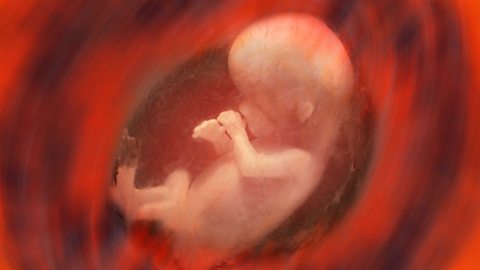
- is smaller in size
- has a smaller brain with fewer neurones
- will have long-term learning and behavioural difficulties
- has distinct facial features

Human and financial costs of alcoholism
Alcoholism has impacts on all areas of society:
- increased violence, antisocial behaviour and crime
- increased risk of accidents
- increased absence from work
- alcoholism increases the likelihood of relationship break-up
- alcoholism increases the likelihood of abuse ã of partner or children
- alcoholism causes mental decline
- alcoholism increases treatment costs to NHS
Mindfulness and relaxation
Our minds can wander often, so it can be really beneficial to practise bringing your mind to the present moment. One way we can try this is by exploring different activities.
It can help us to be really present in our day, not getting caught up in the past or worrying about the future. Being able to focus in school is good ã but it is hard too!
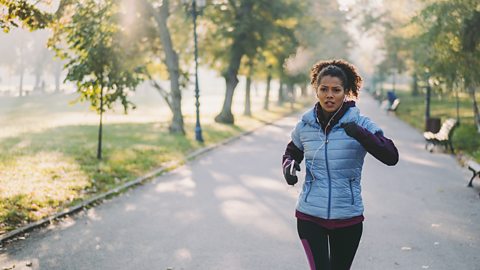
Itãs really normal for your mind to wander to other things. The important part is to gently and kindly bring your mind back to the present moment. The more you practise, the easier it will become. The top tips below are perfect for young and old alike:


- Exercise - itãs been proven that exercise can help us feel mentally refreshed
- Keep a journal - journaling allows you to write down their thoughts, worries, emotions, and ideas, without any judgement from others.
- Puzzles - these help you slow down and focus on one task.
- Walking ã a nice walk can focus the mind on everything around you, which is an essential part of mindfulness
- Technology detox - Even for twenty minutes a day, this can make a massive difference to your mental wellbeing
Communicable disease
A communicable disease (usually caused by bacteria, virus or fungus) is also know as an infectious disease. It is a disease that can be passed from one living thing to another.
Common flu is an example of a communicable disease caused by a virus and spread through the air. Getting the flu vaccine each year is a safe, effective way to prevent flu, as it helps protect your body against infection.
The presence of disease has an effect on society, as unhealthy people may not be able to work and require care. The NHS spends billions of pounds per year treating and looking after sick people.
If too many people become seriously ill at any one time, hospitals run the risk of becoming overcrowded and unable to care properly for sick people.
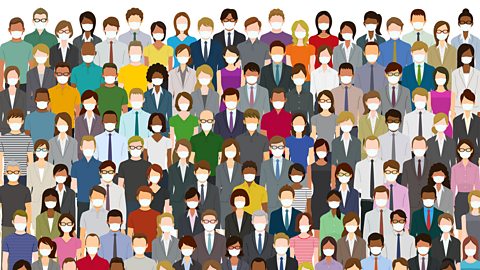
Defence mechanisms help the body protect itself against the entry of microorganisms and resulting communicable diseases. If a microorganism does enter, there are more mechanisms in place to destroy it quickly.
Preventing entry
Skin ã a barrier to microorganisms.
Mucous membranes ã present in the respiratory system to trap microorganisms.
Blood clotting ã stops blood escaping and prevents the entry of microorganisms where the skin has been damaged.
The entry of a microorganism may cause us to be sick while our body fights the infection. This infection is fought off by white blood cells attacking and killing the invading microorganisms.
Covid-19
The main way of spreading the virus that causes COVID-19 is through close contact with an infected person. When someone with COVID-19 breathes, speaks, coughs or sneezes, they release particles (droplets and aerosols) containing the virus. These particles can be breathed in by another person.

Prevention: Protect yourself and others
Although in some situations it may be difficult to do so, the advice to the general public to help reduce the risk of catching coronavirus (COVID-19) and passing it on to others:
- keep a safe distance (social distancing):
- stay at least 2 metres away from people you do not live with
- reduce the time spent in crowded areas
- avoid direct contact and face to face contact with people you do not live with
- follow the basic rules of good hygiene:
- regularly wash your hands with soap and water for at least 20 seconds
- clean your surroundings
- cover your nose and mouth when you cough and sneeze
- wear a face covering
- let fresh air in ã open windows and keep rooms well ventilated with fresh air
Hands ã Face ã Space ã Fresh Air
Vaccination
The vaccines being offered by the NHS have been shown to reduce the likelihood of severe illness from COVID-19.
More on Biology
Find out more by working through a topic
- count1 of 11

- count2 of 11
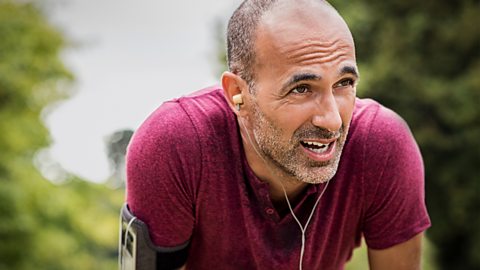
- count3 of 11

- count4 of 11
